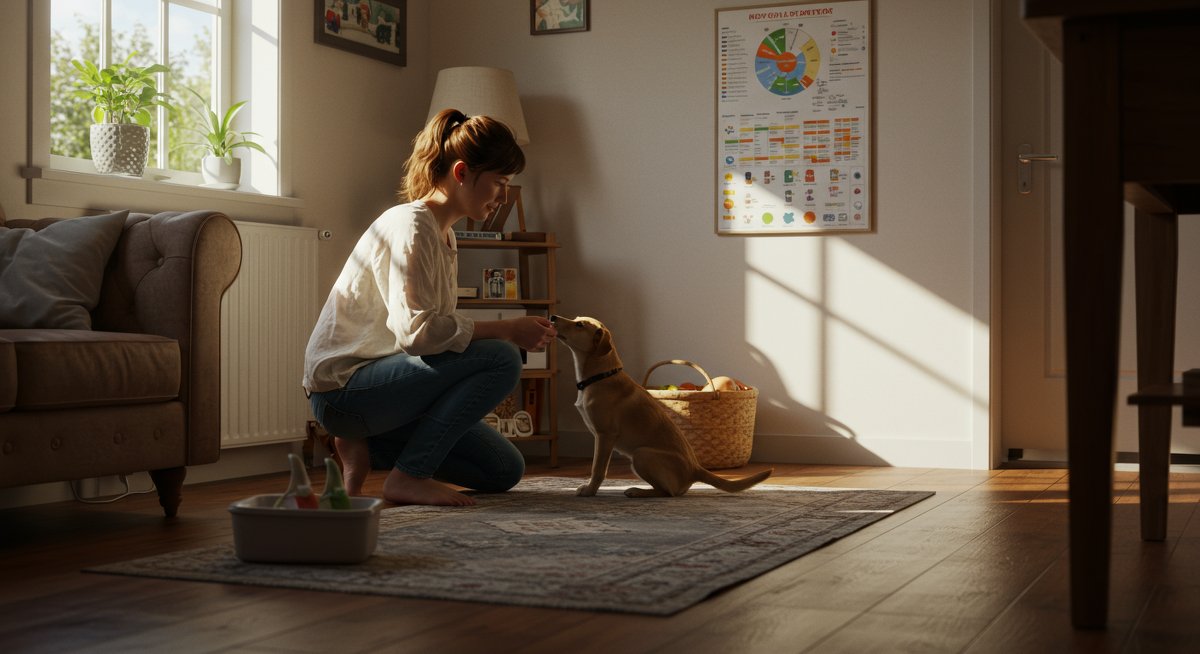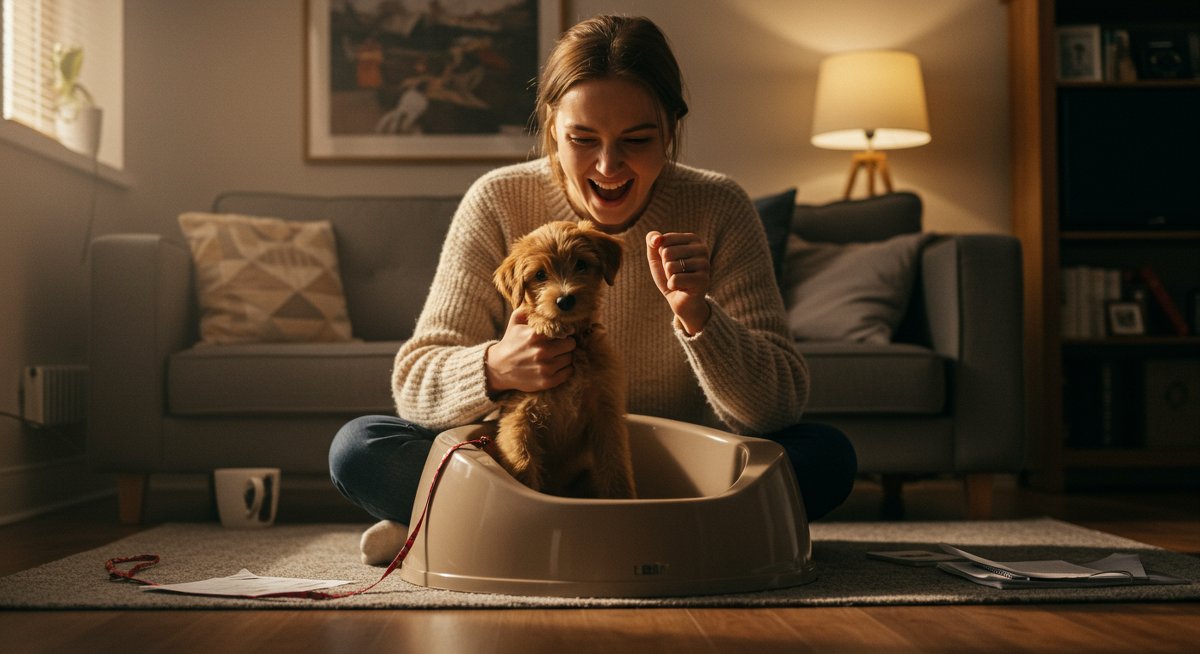
Bringing a new puppy home is an exciting time, but it also comes with the significant responsibility of potty training. This essential guide is designed for new pet owners, offering a step-by-step, 7-day plan to help you successfully house train your puppy. We'll cover everything from crate training and recognizing your puppy's cues to handling accidents and establishing a consistent routine. With patience, consistency, and the right approach, you can transform your puppy into a well-behaved companion, creating a happy and harmonious home for both of you.
Why Understanding Puppy Potty Training is Crucial for Your New Pet
Potty training is a fundamental aspect of responsible pet ownership, crucial not only for a clean home but also for your puppy's overall well-being. It helps establish a strong bond between you and your puppy by fostering trust and clear communication. A well-trained puppy is less likely to experience anxiety or stress related to their bathroom needs, which can lead to behavioral issues. Additionally, successful potty training prevents potential health problems associated with holding urine or feces for extended periods. It also simplifies your daily routine, making it easier to enjoy quality time with your furry friend. Understanding the importance of potty training sets the foundation for a positive relationship and a happy, healthy puppy.
Example 1: Imagine the relief of not having to constantly clean up accidents. This reduces stress and allows you to enjoy your puppy's playful antics without worry. This also saves money and time.
Example 2: Think about the pride you'll feel when your puppy confidently eliminates outside, responding to your cues. This positive reinforcement builds confidence in your pup, which leads to fewer behavioral issues.
Example 3: A puppy that is properly potty trained and has a good understanding of where they need to eliminate will be more welcome to friends, family, and any other visitors you may have to your home.
Essential First Steps for Puppy Care
Before embarking on your 7-day potty training journey, there are essential first steps to ensure your puppy's well-being. First, schedule a vet checkup. This helps confirm the health of your new puppy and ensure that any potential issues, such as urinary tract infections, are ruled out. Next, gather essential supplies: a crate, food and water bowls, puppy food, a comfortable bed, and a selection of safe toys. Then, establish a designated potty spot in your yard or outdoor space. This area should be easily accessible and consistently used to help your puppy associate this location with elimination. Finally, understand your puppy’s breed-specific traits and needs.
Example 1: A vet checkup is important. Make sure your puppy does not have an underlying medical condition that is causing the accidents. The peace of mind that comes with knowing that your puppy is healthy is worth the investment.
Example 2: Setting up your puppy's crate in a quiet and safe area of your home. Make it comfortable with a soft bed, and introduce it gradually. Never force your puppy into the crate.
Example 3: Selecting high-quality puppy food appropriate for your puppy's age, breed, and activity level. Proper nutrition is critical for their overall health.
Common Challenges & How to Overcome Them
Potty training a puppy often presents several challenges. Accidents inside the house are inevitable, but they can be managed effectively. It is important to address these challenges head-on and adjust your training methods accordingly. One common issue is inconsistent scheduling. Puppies need frequent potty breaks, especially after waking up, eating, and playing. Another challenge is a lack of supervision, which can lead to accidents when you’re not watching. Additionally, positive reinforcement is critical, but sometimes, owners accidentally punish the puppy during training.
Example 1: Dealing with accidents inside the house. Instead of scolding your puppy, calmly clean up the mess with an enzymatic cleaner to eliminate odors and discourage repeat offenses in the same spot.
Example 2: Overcoming inconsistent schedules. Make a detailed chart of when your puppy is going out. Take your puppy out every 2-3 hours. This can be adjusted as your puppy gets older.
Example 3: Not being patient. Some puppies learn faster than others. Stay positive and consistent, even if it takes longer than expected.
Tips for Success (e.g., basic training, feeding schedules)
To maximize your puppy's potty training success, focus on several key areas. Implement a structured feeding schedule, providing meals at consistent times. This helps regulate their bowel movements and makes it easier to predict when they need to go out. Develop a consistent potty schedule, taking your puppy out at the same times each day, including first thing in the morning, after meals, after naps, and before bedtime. Praise and reward your puppy immediately after they eliminate outdoors, using enthusiastic verbal praise and a small treat. Never punish your puppy for accidents, as this can create fear and anxiety. Instead, use positive reinforcement to encourage desired behaviors.
Example 1: Feeding on a schedule will help your puppy have predictable potty breaks. Start with 3-4 small meals a day, and gradually transition to two meals as they get older. This consistency allows you to learn and observe your puppy’s elimination patterns.
Example 2: Take your puppy out every 2-3 hours, especially after waking up, eating, and playing. This frequency will help prevent accidents. Observe for signs your puppy needs to go potty. Signs include circling, sniffing the ground, and squatting.
Example 3: Using positive reinforcement by rewarding your puppy immediately after they eliminate outdoors. Use enthusiastic praise and a small, high-value treat to reinforce the desired behavior.

Building a Strong Bond with Your Puppy
Building a strong bond with your puppy is essential during the potty training process and beyond. This is an opportunity to increase trust and communication. Spend quality time with your puppy, engaging in activities they enjoy, such as playing fetch, going for walks, or simply cuddling. This shared time strengthens your relationship and makes training more enjoyable. Use positive reinforcement techniques consistently, praising and rewarding desired behaviors. Avoid punishment, which can damage your bond and hinder training progress. Provide your puppy with plenty of mental and physical stimulation. This prevents boredom and destructive behaviors that can arise from pent-up energy. By being present and engaged, you create a nurturing environment that fosters trust, love, and a lifelong connection with your puppy.
Example 1: Spend time playing games like fetch or tug-of-war. Physical play helps to release pent-up energy, which makes your puppy more receptive to training. It also increases the trust.
Example 2: Consistency with both potty breaks and praise. Take them to their designated potty area at the same times each day and reward them for eliminating outdoors. This consistency and praise is essential to helping your puppy understand expectations.
Example 3: Offer plenty of opportunities to socialize with other dogs and people. This improves your puppy's ability to interact appropriately with others.
Recommended Products for New Owners
To make puppy potty training easier and more effective, consider these recommended products for new owners. A well-sized crate is crucial for providing a safe and comfortable den-like space for your puppy. Training pads can be helpful for indoor accidents. Enzymatic cleaners are essential for thoroughly removing odors and preventing repeat accidents. High-quality puppy food provides the proper nutrition to support growth and development. A leash and collar set are needed for safe outdoor potty breaks. A clicker and treat pouch can be valuable tools for positive reinforcement training.
Example 1: A crate that is the right size for your puppy. The crate should be big enough for the puppy to stand up, turn around, and lie down comfortably but not so big that they can eliminate in one area and sleep in another.
Example 2: Enzymatic cleaners, which are specifically designed to remove urine odors and prevent repeat accidents in the same spot. Make sure that you use a cleaner that is safe for use around pets.
Example 3: Investing in a high-quality puppy food that meets your puppy's nutritional needs. Read labels carefully and consult with your vet.
Quick Troubleshooting Guide
Accidents still happening? Here's a quick troubleshooting guide to address common potty training issues. If your puppy is having frequent accidents, reassess your potty schedule. Ensure you’re taking them out frequently enough. If accidents are happening in the crate, make sure the crate is the correct size. If your puppy is still having accidents, consider a vet checkup to rule out any medical causes. If your puppy isn't eliminating outdoors, try staying outside longer. Keep the puppy engaged to encourage them to eliminate. If your puppy is consistently eliminating in a specific area, ensure it is thoroughly cleaned with an enzymatic cleaner to remove odors.
Example 1: If your puppy is having frequent accidents, consider taking them out every 2 hours instead of 3. Make adjustments based on your puppy's needs.
Example 2: If accidents are happening in the crate, make sure the crate is the correct size. If the crate is too big, your puppy may eliminate in a corner.
Example 3: If your puppy is not eliminating outdoors, stay outside for a longer period of time. Try walking around their designated potty spot to stimulate them to go potty.
Next Steps in Your Pet Parenthood Journey
Congratulations on starting your puppy potty training journey! You have the tools and knowledge to create a happier, healthier home for both you and your puppy. As you move forward, continue to practice patience, consistency, and positive reinforcement. As your puppy grows, continue to adjust your training methods. Consider enrolling in obedience classes for advanced training. Also, continue socializing your puppy with other dogs and people to promote good behavior. Make sure to schedule regular vet checkups to keep your puppy healthy. With dedication, you'll experience the immense joy and fulfillment of raising a well-trained, loving companion.